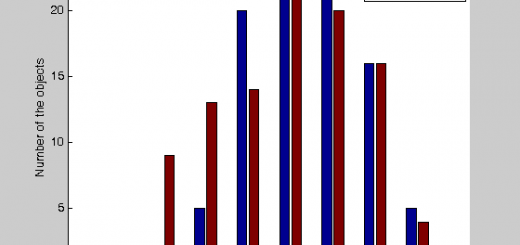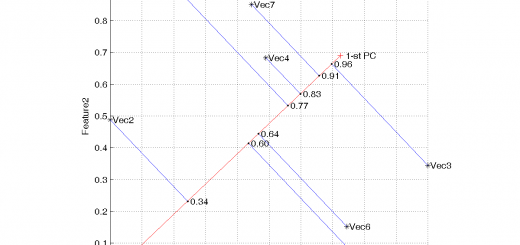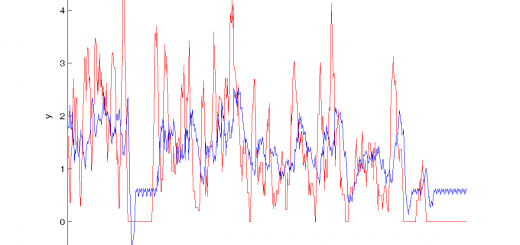LARS is one of the most effective algorithms to select linear regression models. It is not so greedy as step-wise regression and takes not so much steps as Lasso.
Contents
% Least Angle Regression, demo
Create synthetic data
We think of a model, see below the code. Try to guess the model with LARS.
% Assign a model f = inline('w(1)*x.^0 + w(2)*x.^(1/2) + w(3)*x.^1', 'w','x'); % synthetic model b = [1 -2 2]'; % parameters x = [0.1:0.1:1]'; % independent variable y = f(b,x); % dependent variable % We use the following features to find the model we thought of g = {'x.^0', 'x.^(1/2)', 'x.^1', 'x.^(3/2)', 'x.*log(x)'}; % make the sample set; columns are independent variables X = eval([ '[' g{1} ' ' g{2} ' ' g{3} ' ' g{4} ' ' g{5} ']']);
Run LARS
[n,p] = size(X); muA = zeros(n,1); % estimation of the dependent variable beta = zeros(p,1); % estimation of parameters betaLtst = beta'; % keep parameters in a storage for i = 1:p % correlation coefficients between each feature (column of X) and vector of residuals c = X'*(y-muA); % note that columns of X are centered and normalized [C, A] = max(abs(c)); % find maximal value of correlation and corresponding index j of column in X % A = find(C == abs(c)); % Aplus = find(C==c); % never used Sj = sign(c(A)); % get sign of j-th correlation coefficient XA = X(:,A).*(ones(n,1)*Sj'); % % XA = X(:,A)*Sj; % G = XA'*XA; % norm of XA oA = ones(1,length(A)); % vector of ones AA =(oA*G^(-1)*oA')^(-0.5); % inverse matrix in the normal equation wA = AA*G^(-1)*oA'; % parameters to compute the unit bisector uA = XA*wA; % compute the unit bisector a = X'*uA; % product vector to compute new gamma if i<p % for all columns of X but the last M = [(C-c)./(AA-a);(C+c)./(AA+a)]; M(find(M<=0)) = +Inf; gamma = min(M); else gamma = C/AA; end muA = muA + gamma*uA; % make new approximation of the dependent variable beta(A) = beta(A) + gamma*wA.*Sj; % make new parameters betaLtst = [betaLtst; beta']; % store the parameters at k-th step end
Plot parameters at each step of LARS
s1 = sum(abs(betaLtst),2); plot(s1, betaLtst); hold on plot(s1, betaLtst); xlabel('sum of model parameters'); ylabel('parameters'); legend('\beta_3', '\beta_1', '\beta_2') hold off

Plot the results
idx = find(beta ~= 0); disp('Recovered model contains') g(idx) % Recover LARS results using the last value of beta y1 = X(:,idx)*beta(idx); % Recover Least Squares result Xa = X(:,idx); y3 = Xa * pinv(Xa'*Xa)*Xa'*y; plot(x,y,'*'); hold on plot(x,y1,'r-'); plot(x,y3,'b-'); legend('Source data','LARS C_p metric', 'LARS selected')
Recovered model contains
ans =
'x.^0' 'x.^(1/2)' 'x.^1'

Warning
% Note that Least Squares w = pinv(X'*X)*X'*y % give the same result (for this very example, of course)
w =
1.0000
-2.0000
2.0000
0.0000
-0.0000


